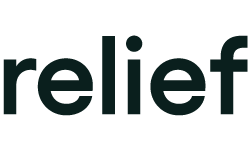Welcome to Your Cycle ! 💫 Your first period is a big deal — and it comes with a mix of feelings. Maybe you're excited, maybe unsure, maybe both. Wherever you’re at, know this: there’s no “right” way to feel. But there are great ways to support your body and the planet as you step into this new phase.
This guide walks you through what’s happening in your body, your product options, and how to make eco-friendly choices that feel right — for you.
🩸 What’s Happening in Your Body?
Your menstrual cycle is your body’s natural rhythm. It usually starts between ages 10 and 15, but everyone’s timeline is different. Your period is just one part of this cycle — a monthly flow that’s a sign your reproductive system is healthy and working.
At first, your period might be irregular or shorter than expected — and that’s completely normal. It can take several months (or even years!) for your body to find its rhythm. Once things settle, most people get a period every 23 to 35 days, lasting anywhere from 2 to 7 days.
You may also experience cramps, mood shifts, or low energy. The key is to give yourself time to get to know your flow — and how you feel during each phase. Want to understand what’s happening in your body, week by week? Head over to our Menstrual Cycle Decoded to explore each stage in more detail.
🌱 Sustainable Period Products: Your Options
There’s no one-size-fits-all product — especially when you’re just starting your menstrual journey. But the good news? You’ve got options. And many of them are kind to your body and the planet.
🍃Period Underwear
Soft, breathable, and leak-proof — period underwear is one of the easiest and most comfortable ways to manage your flow. Our top picks?
🌟Feel Nothing Bikini: Meet the next-level leak-proof — your lightest, most breathable, leggings-friendly period underwear. As its name suggests, you’ll barely feel it’s there. Ideal for sporty days or when you just want to move freely. Don’t let your cycle mess with your workout schedule — embrace it with comfort.
🌟Go With the Flow Bikini: Super absorbent, beautifully designed, and incredibly easy to wear. This is the pair you’ll reach for again and again — whether it’s your first period or your fiftieth.

💡 How to Choose What’s Right for You
Ask yourself:
- What makes me feel safe and comfortable?
- Do I want something I can wear to school without worrying about leaks?
- Can I easily wash, dry and reuse my period product?
We recommend trying period underwear first because it’s easy to use, discreet and highly absorbent. It can also be cleaned and reused for many years, making it good for the environment. You can always try other options later. Remember: your needs might change over time, and that’s okay!
🌍 Why Sustainability Matters — and How You Make a Difference
In the United States alone, around 20 billion disposable menstrual products are thrown away each year — creating over 240,000 tons of solid waste (United States Environmental Protection Agency, 2021). Many of these contain plastics that take hundreds of years to break down. That’s a lot of impact for something we use for just a few hours.
By switching to reusable products such as period underwear, you help reduce waste, save money, and even protect your health — because yes, some chemicals in conventional disposables may actually worsen cramps.
At Relief Wear, we believe our bodies and our planet deserve to be looked after. All of our products undergo rigorous testing by third-party laboratories and are 100% free of PFAS and other hazardous chemicals. Every conscious choice you make sends a message — and it adds up to real change. One period at a time 🍃.
💗 Final Tips: Be Kind to Yourself
Learning about your body takes time. So does figuring out what works for you. Here are a few reminders:
- Track your period so you feel more prepared
- Keep extra underwear in your backpack
- Talk to someone you trust
- Rest, move, eat well, and drink water to care for your body
You’ve got this. And Relief’s got you.
References
[2] NHS (2023). Starting your periods
[4] Upson K, A Shearston J, Kioumourtzoglou M (2022). Menstrual products as a source of environmental chemical exposure: A review from the epidemiologic perspective






